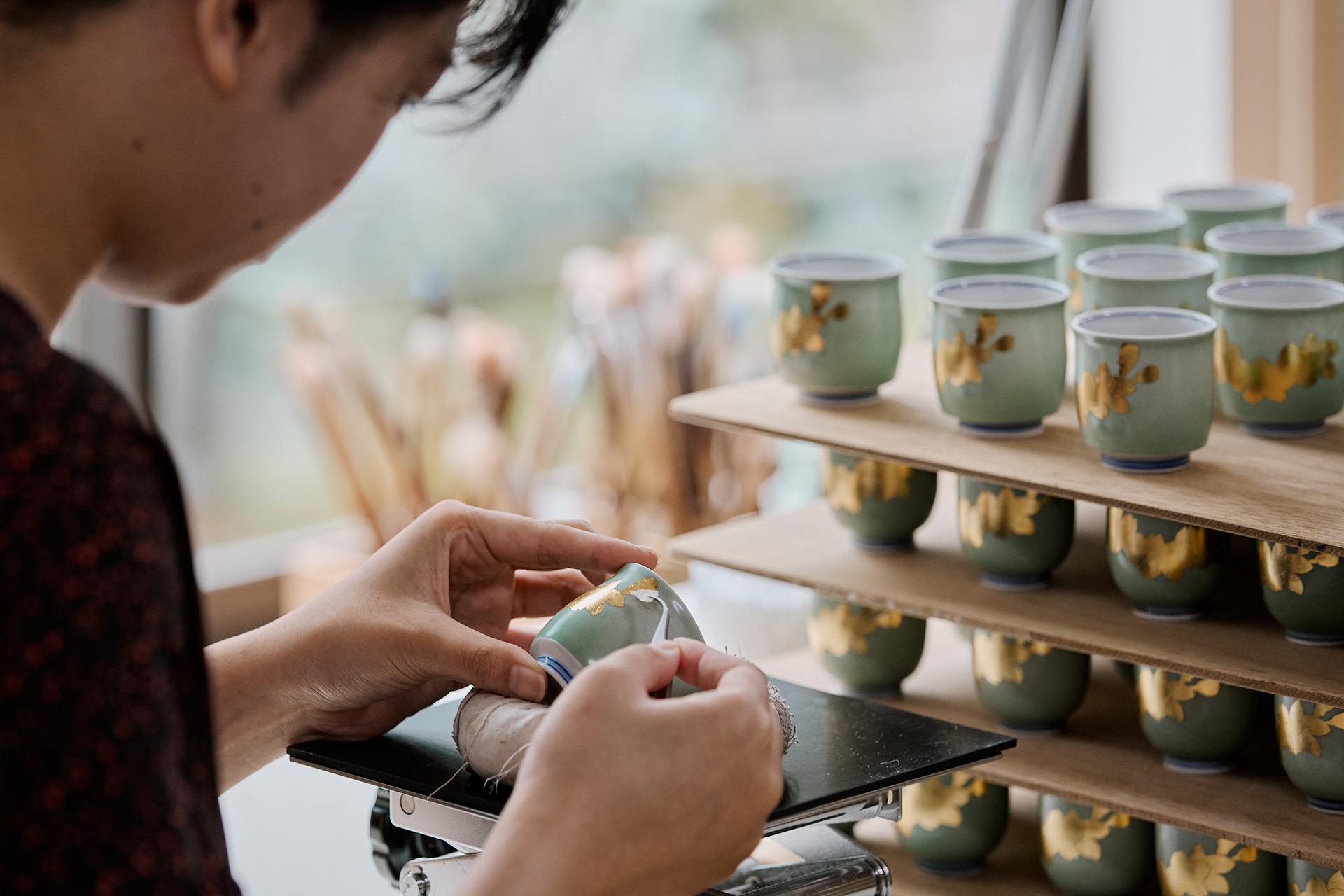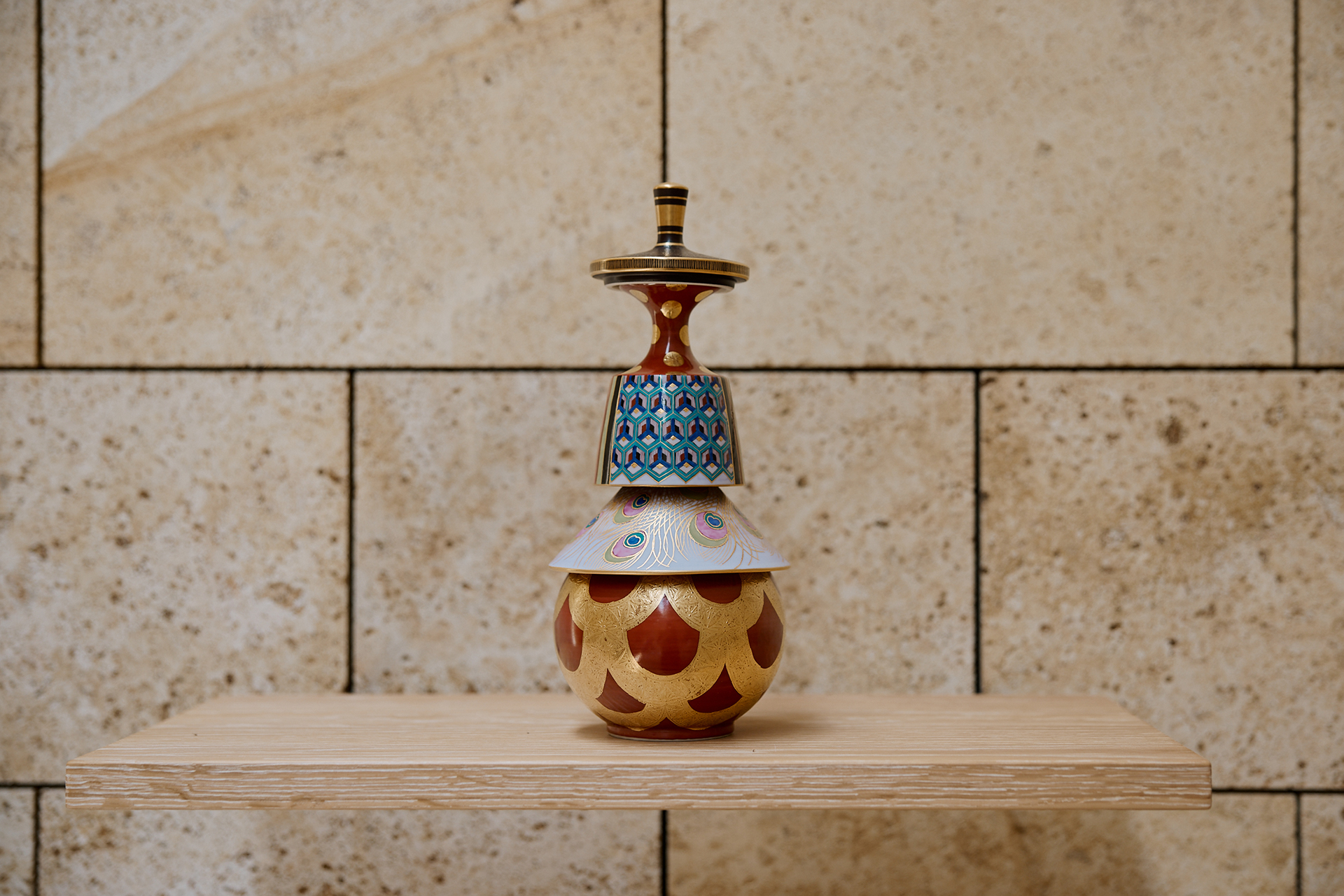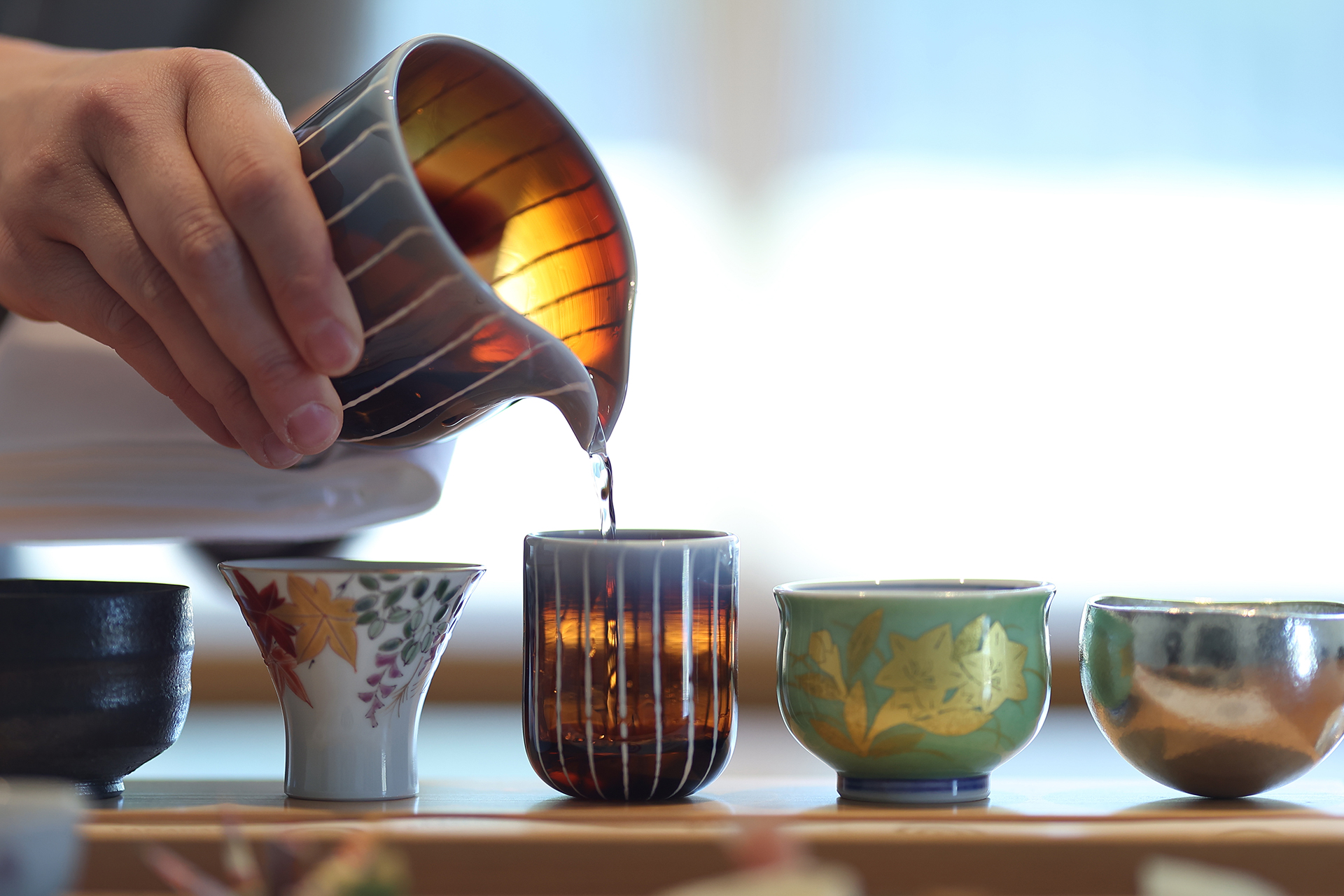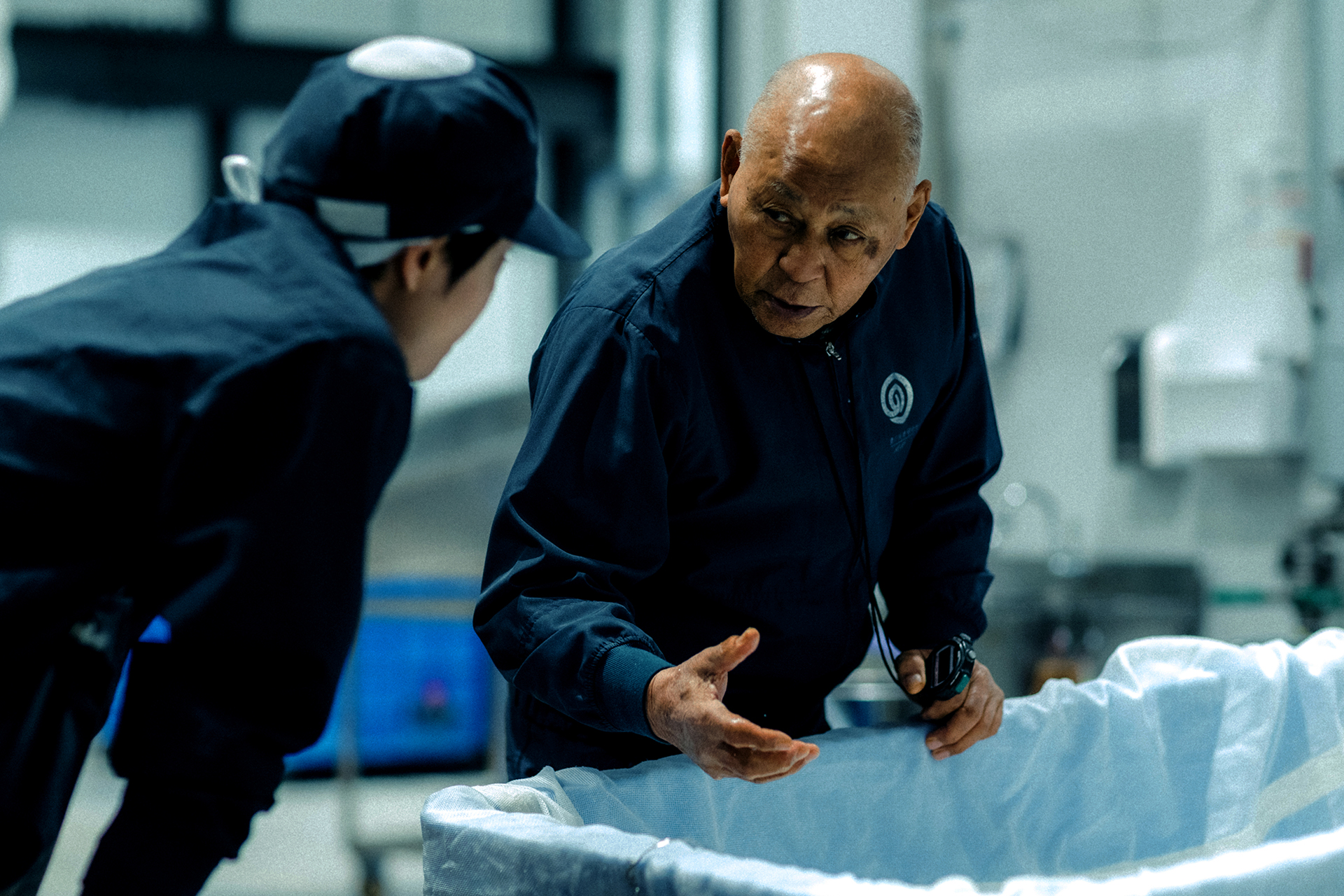Local Lore

Kutani Ware

Ishikawa is known throughout Japan for a distinctive style of ceramics known as Kutani Ware, painted with a palette known as the “five colors of Kaga” – blue, purple, red, yellow, and green.
For well over a century, though, production stopped entirely, until it was revived in the early 19th century, going on to become a hit at the 1873 World’s Fair in Vienna and onward to worldwide popularity. While it may no longer be a household name internationally, Kutani Ware remains as beautiful as ever, with artisans producing bold, colorful plates, bowls, and vases, and even more contemporary items like wine glasses with spectacular Kutani Ware stems.
Visitors to Ishikawa can go beyond simply shopping for Kutani Ware at stores, with visits to workshops where you can see artisans hard at work on these gorgeous ceramics — or even try painting your own, for a truly one-of-a-kind souvenir to remember your trip by.
Established in 1906, Kinzangama Kiln in Komatsu specializes in Kutani Ware over glaze painting. They’re best known for their excellence in a variety of kinsai (glaze painting using gold) techniques that have been passed down over generations.
The resulting creations are eye catching and colorful, while maintaining a sense of elegance and sophistication. They are also skilled in another technique known as Shiromori. One of the most delicate and elegant over glaze painting techniques, it involves applying white paint which rises slightly from the surface to create a textured effect. Delicate patterns of loops and swirls of pure white create a stunning contrast against the base porcelain. The kiln has a gallery where visitors can admire or even purchase their favorite items.

Sake

The Taste of Ishikawa: Human Skill and Natural Bounty in Every Bottle
Sake has a profound significance within Japanese culture. It goes without saying that it’s at the center of many evening events, serving as a “social lubricant,” but it’s also used for religious rites within Japan’s indigenous religion of Shinto. It makes a certain sense that it’s used for offerings to the deities of nature: sake is made from water and rice, long considered the two most valuable gifts of nature, but with the addition of human ingenuity to create something “worth giving back.”
Ishikawa is known by sake lovers throughout Japan, and for good reason — the prefecture has everything it takes to produce truly excellent results. In addition to the superior rice grown here and the pure water from various springs, Ishikawa is also home to a legendary tradition of artisanal brewing skill. The sake is, of course, outstanding, but you don’t have to take our word for it: Ishikawa might not be one of the country’s biggest producers of sake, but it is one of Japan’s top drinkers of it!
Terroir Isn’t Just for Wine!
Over the years, the concept of terroir has become synonymous with wine. Intuitively, it makes sense that the natural environment where things are grown can have a significant impact on its flavor, aroma, and character. At the same time, though, terroir applies to much more than wine, as well. Sake is made from so few ingredients — little beyond water, rice, and time — that each one has an enormous influence on the finished product.
Ishikawa is a major grower of rice, including varieties bred specifically for sake brewing, and that loving attention finds its way into every bottle of sake. Rice used for brewing is noticeably different from varieties meant to be eaten: each grain has significantly less fat and protein, and as a result, sake brewed with this rice has a much cleaner flavor by comparison. The local passion to create better and better sake rice is perhaps best typified by the farmers and researchers here, who have worked to develop sake rice specifically suited to the local environment and water.
And if the rice is the lead singer, the water is the band — the two come together to be more than the sum of their parts. Many of Japan’s famous sake-brewing regions are centered around an excellent water source, and Ishikawa is lucky enough to have more than one. For instance, the Noto Peninsula sticks out into the Sea of Japan to the north, and the natural springs in the lush, human-tended satoyama forests here are defined by their soft water, perfect for brewing sake that is both sweet and smooth.
On the other hand, the southern half of the prefecture, known as the Kaga region, has superb ground water that is rich in minerals. The ultimate source of this water is the sacred Mt. Hakusan: snow that falls on the mountain in winter then melts in spring and summer, percolating down through the soil to feed underground streams. This water is delicious enough to drink on its own, so it goes without saying that it makes for superb sake. Indeed, sake brewed in the Kaga region is often known for a crisp, dry finish.
The Secret Third Ingredient
As any aspiring home cook can tell you, there’s no point you can reach where your ingredients become so good that they simply prepare themselves, and sake is no exception. The human skill and ingenuity that go into every bottle just might be even more important than the rice and water. The master brewer at each brewery is called a toji, and many of them belong to brewing guilds. There are over thirty such toji guilds nationwide, but the Noto-Toji guild, based in Ishikawa, is considered one of the “big four,” renowned for their trademark rich flavor and bouquet.
Like so much else about sake-brewing in Ishikawa, the Noto-Toji style is fundamentally rooted in the natural environment, especially the weather. Being on the Sea of Japan coast, the Noto Peninsula gets a great deal of snow in winter, which has traditionally made farming impractical during the colder months of the year. A number of local cottage industries developed here as ways to make a living indoors through the winter, including a collection of sake-brewing techniques. These techniques were gradually refined as they were passed down over the centuries, ultimately becoming the Noto-Toji techniques, enabling the people of Noto to not merely survive the harsh climate but to thrive in it.
The bitter cold of winter here is actually an asset to brewers, as the sake benefits from slow fermentation for a more complex flavor. As the temperature changes from day to day, the toji master brewers keep a close eye on the fermenting moromi mash at all hours, using their knowledge and carefully honed intuition to ensure that it never gets too warm nor too cold. The days can be long, and the work can be hard, but the competition is strong.
One might expect that the use of Noto-Toji techniques at various breweries in the area would lead to products largely indistinguishable from one another, but this could scarcely be further from the truth. Rather, these breweries build upon a strong foundation of Noto-Toji fundamentals, each with their own ideas and goals in mind. They also make a point of sharing information with one another, on the grounds that friendly competition with worthy rivals helps raise the bar for everyone.
Sampling a Taste — Or Grabbing a Bottle!
In Ishikawa, sake fans are spoiled for choice. Restaurants here, especially non-chain ones, will often have at least a couple of bottles of local sake to choose from, and many of the fancier places will even offer pairing suggestions to go with a meal. Some of these restaurants serve dishes like high-end sushi made with freshly caught seafood, but many of Ishikawa’s fine dining establishments focus on other cuisines as well, such as French, Italian, or Chinese specialties. Ishikawa is, if nothing else, a prefecture of food lovers.
A number of sake breweries in Ishikawa offer tours and tastings, but for true sake connoisseurs and aficionados, there may be no better destination than the Noguchi Naohiko Sake Institute. This combination brewery-museum is named for its founder, who earned the nickname “the god of sake brewing” for an illustrious career spanning decades both as a brewer and as the head of the Noto-Toji guild. In 2017, he came out of retirement to establish this institute, in hopes of sharing the techniques and spirit of sake-brewing with generations to come.
Beyond exhibits of items like brewing notes that offer a look at Noguchi’s work style, perhaps the biggest draw of the Sake Institute is its beautiful tasting room, which features a large window with a spectacular view of the surrounding natural environment. Guests can spend a relaxed hour and a half sampling five or six varieties of local sake, served in cups of various shapes and sizes. They might even be served at different temperatures, from chilled to warmed, and come with local delicacies to sample alongside the drinks. There’s something for everyone to enjoy: people new to sake can encounter the range of flavors and aromas sake can offer, while sake lovers can discover new favorites to savor. The Sake Institute even offers a non-alcoholic tasting set for designated drivers and non-drinkers, for a carefully crafted selection of unique beverages to sip alongside the rest of the group.
